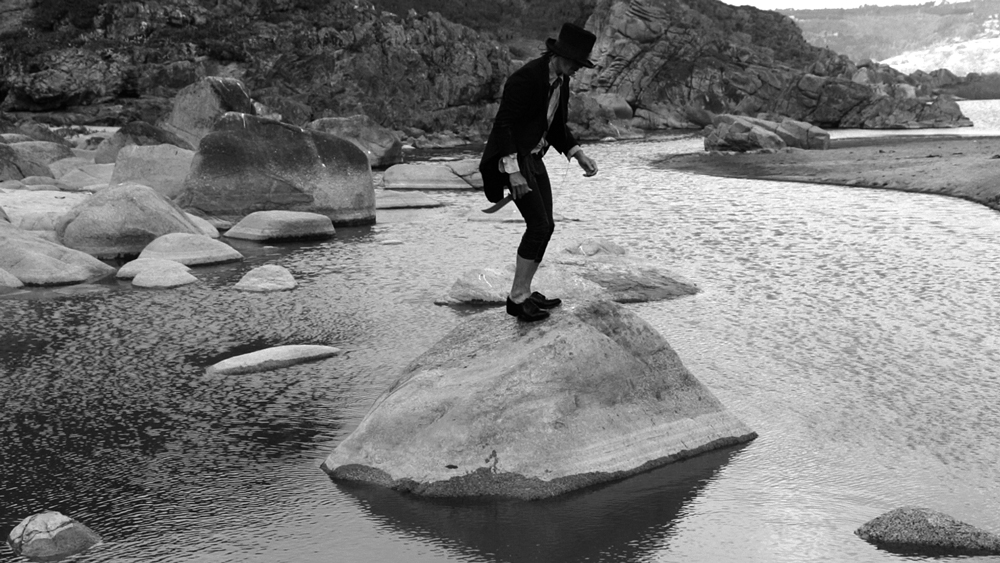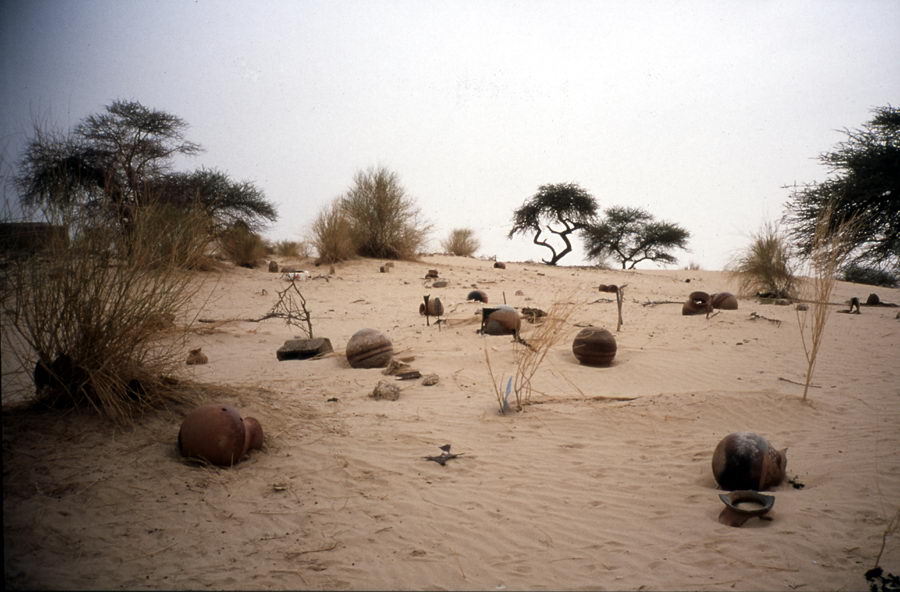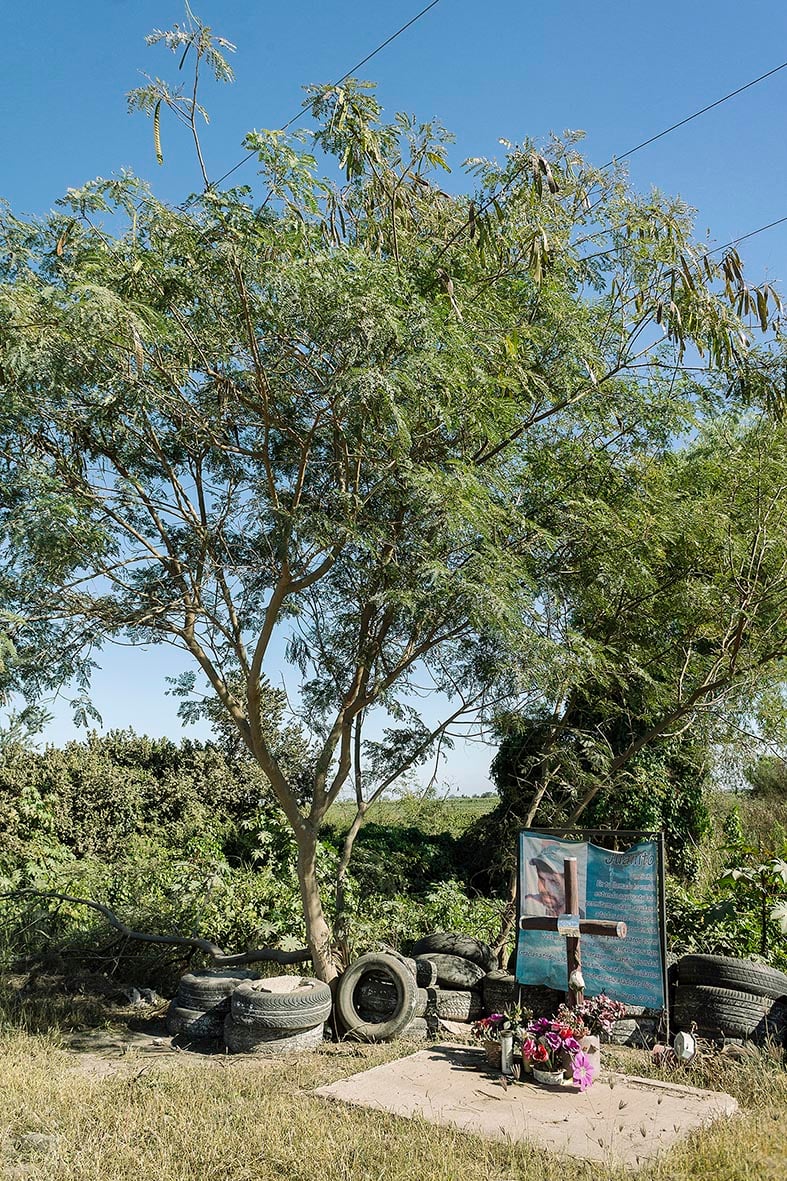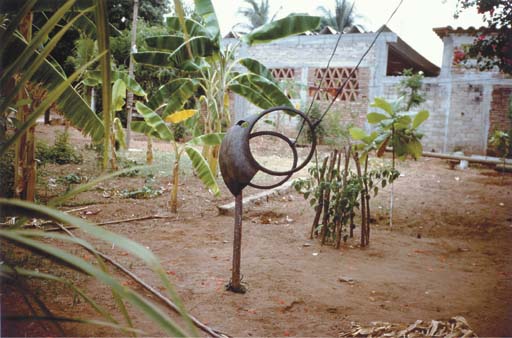Study for a Recycling Device
2005
11.8Hx 31.5W x 7D inches
Pedro Reyes
In Reyes’s words, “We should be able to extract the technological nutrients before we excrete our waste. There is a missing organ in our social metabolism which would work as a stomach or intestines. The Recyclone is a device made of plastic containers that fit into each other. (The plastic boxes are the equivalent to the ‘vellum,’ which are the tiny hairs that stick out from the intestinal wall to absorb nutrients). The permutation of this plastic bins could be customized to satisfy anyone’s recycling needs.” This work offers the possibility of a more visually appealing and adaptable recycling mechanism, assisting in the conscientious extraction of reusable material from industrial products.
Pedro Reyes’s works traverse the worlds of art, film, architecture, design, social criticism, and pedagogy. Educated as an architect, Reyes draws on this training to engage with utopian aspirations and the ongoing legacy of Modernism, often focusing on issues of scale and space while questioning pressing social issues through the incitement of individual or collective interaction. Although only a few of his works are directly located within the practice of building, almost all involve some kind of construction, whether they are objects, models, interiors, or social spaces. Reyes also makes use of strategies developed for communication or education, as well as everyday humor, to engage his audiences. Many of his works either allow large-scale public engagement or suggest a possible use: weapons turned to shovels, multilevel parks in old modernist buildings, and small spherical rooms. Like many avant-garde thinkers of the past, Reyes constructs new forms of architecture necessary for new ways of life.
Colors:
Related works of genres: » mexican contemporary artists

© » KADIST
Minerva Cuevas
2006During her research on primitive currencies and cultural cannibalism, Cuevas came across the Donald Duck comic book issue “The Stone Money Mystery,” where Donald goes on a quest to find missing museum objects...

© » KADIST
Mario Garcia Torres
2005Mario Garcia Torres films a game of Charades among professional actors guessing the former North Korean dictator’s favorite Hollywood films...

© » KADIST
Carlos Amorales
2014Carlos Amorales, based in Mexico City, works in many media and combinations thereof, including video, drawing, painting, photography, installation, animation, and performance...

© » KADIST
Francis Alÿs
2006This series of small drawings is executed with varying materials—pen, ink, colored pencil, charcoal, and masking tape—on architect’s tracing paper...

© » KADIST
Miguel Calderon
2009Tropical Vulture is a cross-generational project which highlights the artistic influences between George Kuchar, a Bay Area legend of independent filmmaking, and Mexican artist Miguel Calderón...

© » KADIST
Gabriel Orozco
2002Gabriel Orozco comments: “In the exhibition [Documenta 11, Kassel, 2002], I tried to connect with the photographs I took in Mali in July...

© » KADIST
Mario Garcia Torres
2004Mario Garcia Torres imagines cinematic devices to replay stories occasionally forgotten by Conceptual art...

© » KADIST
Teresa Margolles
2014Stretching between San Pedro and the beach in Altata, Sinaloa, there is a 40 km road where there are three invisible borders controlled by rivalling armed groups...

© » KADIST
Francis Alÿs
2004The Nightwatch , which is an ironic reference to the celebrated painting by Rembrandt, follows the course of a fox wandering among the celebrated collections of the National Portrait Gallery in London...

© » KADIST
Gabriel Orozco
1992Gabriel Orozco often documents found situations in the natural or urban landscape...

© » KADIST
Carlos Amorales
2005Produced on the occasion of an exhibition at ARTIUM of Alava, Basque Centre-Museum of Contemporary Art, this deck of cards is a selection of images from Carlos Amorales’s Liquid Archive...

© » KADIST
Carlos Amorales
2006This work, a large oil painting on canvas, shows a moment from Amorales’s eight-minute two-channel video projection Useless Wonder (2006)...

© » KADIST
Abraham Cruzvillegas
2004Wright Imperial Hotel (2004) is a sort of bow and arrow made out of feathers, a São Paulo phone book, and other materials...

© » KADIST
Gabriel Orozco
1994Charco portátil congelado (Frozen Portable Puddle, 1994) is a photographic record of an installation of the same name that Gabriel Orozco made at Witte de With Center for Contemporary Art in Rotterdam for the group exhibition WATT (1994)...

© » KADIST
Carlos Amorales
2007This work, a large oil painting on canvas, shows a moment from Amorales’s eight-minute two-channel video projection Useless Wonder (2006)...





